Annual General Meeting Special: IADC 2011– operations summary
From government affairs to accreditation to new drilling technologies, IADC staff pushes ahead on multitude of initiatives
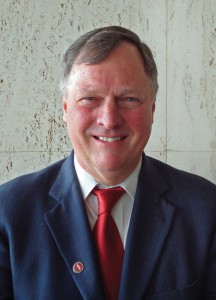 Brian Petty, executive vice president – government affairs
Brian Petty, executive vice president – government affairs
Jones act legislation
IADC is coordinating a lobbying strategy in response to US House legislation introduced in September 2011 at the behest of the Jones Act Coalition. The legislation, HR 2946, would require any foreign-flag MODU intending to operate under US jurisdiction to be re-flagged as US. This could cause extreme difficulties for many drilling contractors due to financing constraints and the need to transfer effective control of the asset to an owner that can meet the required citizenship criteria.
IADC is supported by Shell and Maersk in opposing this legislation. Similar legislation was introduced in the last Congress and failed. It’s expected that this bill will also fail.
Discharge Reform Act
IADC was among 14 organizations that wrote to US House members expressing strong support for the Commercial Vessel Discharges Reform Act of 2011, which will provide a uniform federal framework for the regulation of ballast water and other vessel discharges.
Legislation to establish a consistent, practical and science-based national program for the management of vessel discharges is urgently needed, the groups stated. “The current statutory system is a confusing, duplicative and inconsistent patchwork in which two federal agencies (the Coast Guard and EPA) and more than two dozen states regulate the same vessel discharges in overlapping and sometimes contradictory ways,” according to the letter.
The absence of a clear and effective federal framework constrains the movement of essential maritime commerce, jeopardizes American jobs, multiplies regulatory burdens on businesses and workers, puts the environment at risk and forces taxpayers to pay for duplicative and contradictory government programs.
The groups believe the reform act will fix the situation and urged congressional leaders to take action. The letters were addressed to the chairmen and ranking members of the committees on Transportation and Infrastructure; on Coast Guard and Maritime Transportation; and on Water Resources and Environment.
The proposed legislation (HR 2840) was approved by the Transportation and Infrastructure Committee on 13 October, with the recommendation that it be considered by the House as a whole.
Indonesia cabotage law
An Indonesian newspaper reported in early 2011 that the government and lawmakers in that country agreed to exclude vessels in the oil and gas industry from its cabotage law.
According to the report, Yasti Soepredjo, chairman of the House of Representatives Commission V, said that the Transportation Ministry must issue a special regulation to accommodate specific activities of foreign vessels that serve the offshore oil and gas sector.
Foreign-flagged vessels that would be excluded from the cabotage rules are those engaged in seismic, drilling and offshore construction activity in oil and gas. Indonesian shipowners do not engage in these activities because of the high investment costs involved and short contracts, said Johnson W Sutjipto, chairman of the Indonesian National Shipowners Association. “We are not against them operating in Indonesia. We need them,” he was quoted as saying.
Indonesia enacted its cabotage law in 2005, but industry has been trying for years to convince the government that enforcement would bring dire results. The commission was told, for example, that Indonesia could lose $7 billion in oil and gas production if enforcement went ahead. Indonesian Petroleum Association vice president Sammy Hamzah has said the law could cost the country 200 million bbl of oil and $13 billion in investment.
EU energy policy
The International Association of Oil & Gas Producers (OGP) urged the European Commission to take caution in its transition to a low-carbon energy mix, saying the EU can’t afford to be out of pace with the economic development of the rest of the world. The comments were included in a letter sent in late April to the EU Task Force on Resource Efficiency. The letter was signed by Barry King, chairman of the OGP EU Committee; Mr Petty serves on the committee.
The letter also recommended allowing for swift appraisal of the EU’s shale gas potential and emphasized that “affordability, flexibility and ensuring resilient energy supplies should be the primary policy goals of the Resource Efficiency effort.”
UK shale gas report
The UK House of Commons’ Energy and Climate Change Committee put its support behind shale gas and hydraulic fracturing in a 2011 report looking at the impact shale gas could have on water supplies, energy securities and greenhouse gas emissions.
According to the report, the inquiry found no evidence that hydraulic fracturing poses a direct risk to underground water aquifers as long as the well is constructed properly. The committee concluded that a moratorium on fracking in the UK is not justified or necessary at present.
UK Parliament member and committee chairman Tim Yeo was quoted as saying, “There has been a lot of hot air recently about the dangers of shale gas drilling, but our inquiry found no evidence to support the main concern – that UK water supplies would be put at risk. There appears to be nothing inherently dangerous about the process of fracking itself, and as long as the integrity of the well is maintained, shale-gas extraction should be safe.”
The report also concluded that shale-gas extraction could reduce the UK’s dependence on imported gas. The British Geological Survey estimates that the UK’s onshore shale gas resources could be as large as 150 billion cu meters, equivalent to roughly 1.5 years of total UK gas consumption. The committee also called on the government to encourage the development of the offshore shale gas industry in the UK, believing reserves there could “dwarf” onshore supplies.
US-India treaty
IADC and 16 other trade and business groups jointly sent a letter in July 2011 to the US government urging progress on US-India bilateral investment treaty (BIT) negotiations “so that US companies and their workers will not lose out on important economic opportunities and protections in the highly important and fast-growing Indian market.” The letter was sent to Secretary of State Hillary Clinton and US Trade Representative Ron Kirk ahead of the US-India Strategic Dialogue and Trade Policy Forum.
Negotiating a strong and high-standard BIT with India will produce substantial increases in productive investment by US companies, US exports and other new market opportunities for the US, the letter stated. Moreover, BITs are a vital tool to protect important US investments overseas that promote US exports and economic growth.
A BIT with India would provide strong protection for US property and help open a major market for key US goods and services. It also would help level the playing field for US companies and their workers. India already has 48 BITs in force, including with England, France, Germany, South Korea and Russia.
The lack of a US BIT undermines US companies’ opportunities to compete on an equal basis against tough competitors from around the world.
Unconventionals task force
John Beswick, PR Marriott Drilling, continues to represent IADC on OGP’s Gas Communications Task Force in Brussels. The group’s goal is to identify questions raised by those opposing the exploration of unconventional gases, such as coalbed methane and shale gas, to defend industry from adverse publicity and promote the benefits of E&P development.
Shale gas is the principal target of industry opponents, and threats are serious enough that it could jeopardize the continuation of unconventional gas development in Europe, with repercussions elsewhere if opponents succeed. The main issues are safety of drinking water in the area; chemicals used in fracturing operations; induced seismicity; water use and disposal in fracturing operations; land rights; economic impact on the area (employment); environmental issues such as noise, contamination and dust disturbance; and shale-gas emissions.
In France, the ecology minister put in place a moratorium on shale gas E&P in February 2011 pending a study commissioned by the French government. A Dutch court has ordered the suspension of the Bergermeer gas storage project, the largest in Europe, citing objections by environmentalists and local residents’ fears of tremors from gas injection into the depleted field. Shale-gas development in the Netherlands is also planned, and the impact of this ruling on shale gas is uncertain.
In the UK, Cuadrilla Resources suspended fracturing operations in a shale-gas license until a report is published on low levels of induced seismicity. There is also increasing opposition reported in Germany. All European national governments and regulators are watching the various developments and decisions by other governments that may affect the way they approach the future licensing of unconventional gas development.
This level of opposition and threat has prompted a major effort by OGP, operators and other interested organizations to present a strong rebuttal. OGP has developed a presentation summarizing the reality of the issues at hand.
EU/UK Working Time Directive
Following on last year’s victory when the Scottish appeals court sided with the industry on the Working Time Directive, a hearing of the offshore unions’ appeal in the UK Supreme Court took place on 26-27 October 2011. The 2010 unanimous court decision was a clear vindication for the offshore E&P industry, which argued that the equal time rota for its employees was lawful. Industry’s UK lawyers remain very optimistic that the employers group, including IADC, will prevail.
A decision by the UK Supreme Court is expected at the end of this year. It remains to be seen whether the unions would then take a further appeal to the European Court of Justice.
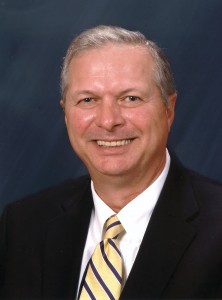 Mike Killalea, group vice president/publisher
Mike Killalea, group vice president/publisher
At a time when the industry is rethinking and, some would say, revolutionizing its approach to drilling, the IADC Advanced Rig Technology (ART) Committee is working to move well-construction technology to the next level. Under the leadership of chairman David Reid, National Oilwell Varco (NOV), the committee comprises three subcommittees: Drilling Control Systems (DCS), led by Terry Loftis, Transocean; Reliability and Guidelines (R&G), Robert Urbanowski, Precision Drilling Oilfield Services Corp; and Future Technology (FT), Dustin Torkay, Archer.
The DCS Subcommittee is working in tandem with the SPE Drilling Systems Automation Technical Section (DSATS) to identify the best method to interface downhole tools with surface systems. In conjunction with DSATS, DCS plans to propose and publish an industry guideline for integrated applications.
To pursue this objective, DCS established four work groups:
• Transfer of Tool Ownership (led by Craig Brooks, NOV): to determine prioritization in changing or shutting down tools, when, for example, multiple pieces of machinery are under automated control. In addition, the group will establish fail-safe modes and other issues;
• User Interface Standardization (Clinton Chapman, Schlumberger): to determine whether UI standardization can be integrated into a driller’s console, if desired;
• Well State/Phase Definition (Fred Florence, NOV): to help define states or phases of the drilling operation. DCS aims to define where downhole communication and integration brings value for specific phases of well construction;
• Cascade Effect of Control (Cesar Peña, Tesco): to measure the impact of cascading intelligent controls systems, such as EDS or Autodriller with DCD.
DCS is seeking volunteers for each of the work groups. Contact Mr Killalea at mike.killalea@iadc.org.
R&G continues to build on its past efforts, including the Technology Value Guide (TVG), which provides definitions for 35 pieces of advanced rig equipment, from top drives and multi-activity to AC drives and automatic drillers. The definitions were developed by members of the R&G Subcommittee.
The TVG also features illustrations of each piece of equipment and links to training providers. The TVG is available through the Additional Resources link on the ART Committee website.
Finally, the FT Subcommittee looks to the past to learn for the future. FT holds workshops and prepares industry papers across a range of topics. Most recently, the FT Subcommittee held two well-attended workshops, the first on stick-slip mitigation, which resulted in a paper presented at the 2011 SPE/IADC Drilling Conference in Amsterdam. The paper was published in the March/April 2011 edition of Drilling Contractor and is available online at www.drilling
contractor.org/stick-slip-workshop-highlights-mitigation-technologies-needs-8781.
Subsequently, FT organized a workshop on shale-gas drilling. Results of this workshop will be presented at the 2012 IADC/SPE Drilling Conference in San Diego, Calif.
A major workshop finding is that technology is expected to overcome most if not all challenges associated with shale-gas development, lowering development costs and minimizing operational footprint. Several operators, the paper will reveal, have initiated research programs, either internally or in collaboration with third parties, to develop more effective stimulation technology, enhanced reservoir “sweet spotting” techniques, or low-cost drilling technology.
Several universities have also initiated new research related to shale-gas development. The paper will refer to ongoing developments in this respect.
Condition monitoring workshop
FT’s next workshop will focus on rig condition monitoring and is scheduled for 19 January 2012 at NOV’s facility at 7909 Parkwood Circle in Houston. Watch the ART Committee website for details.
ART, European style
A major ART goal is to offer drilling professionals outside North America the opportunity to participate. While IADC’s advanced telecommunications systems make it convenient for members to participate in meetings via web and phone, differences in time zones sometimes discourage remote attendance.
Consequently, the IADC ART Committee will hold a half-day meeting and workshop on 12 June in Barcelona, just before IADC World Drilling, also convening in Barcelona. The event will feature a combination of presentations and discussions. Watch the ART Committee website for more information.
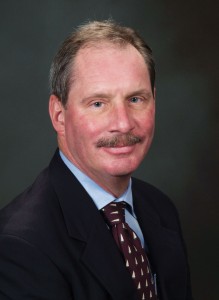 Steve Kropla, group vice president – operations & accreditation
Steve Kropla, group vice president – operations & accreditation
Understandably, for the past 18 months, much of the resources of IADC’s Operations & Accreditation Group have been focused on the plethora of activities that has sprung up worldwide in response to the Montara and Macondo incidents (see Page 104). The investigations, inquiries, regulatory initiatives and industry responses have taxed IADC’s resources like never before. Nevertheless, while Macondo may have changed our world, it didn’t end it, nor stop the broad spectrum of activities that IADC had been engaged in previously.
The industry has continued to grow at a breakneck pace, with the US rig count returning to near-record recent levels, increased focus on shale oil, shale gas and the effect of the looming “big crew change” and more than 140 new offshore rigs either planned, on order or under construction.
IADC’s Operations & Accreditation Group has responded to these demands in part through increased staff to handle environmental concerns over hydraulic fracturing and OSHA regulations dealt with by our Land Division, and by creating a position of industry compliance specialist to help contractors with additional regulations being promulgated that would affect both land and offshore operations. We have also added an industry affairs consultant to provide technical support in Australasia and to supplement IADC’s existing Asia Operations. We also have continued to work closely with other industry groups, from API to OGP and the Offshore Operators Committee to respond to industry needs.
As can be seen in the detailed individual staff summaries that follow, each operating unit within the group – the Offshore Division, Land Division, Regional Operations and the Accreditation & Certification Department (ACD) – have all been engaged in a multitude of efforts both on behalf of IADC and in support of our various standing committees.
IADC’s Offshore Division remains involved in a number of environmental, regulatory and technical matters affecting our offshore contractor members, as well as renewed interest by regulators worldwide in the IADC HSE Case Guidelines for Mobile Offshore Drilling Units. The division has also liaised regularly with members and our accreditation unit to help contractors comply with the new SEMS requirements.
To meet increased demand for its services, ACD has undergone a reorganization to allocate resources specifically to program development, customer service, and quality assurance and quality control (QA/QC). Including the responsibility for training provider audits, QA/QC will be facilitated through a contract giving ACD access to DNV’s global network of professional, independent auditors.
IADC’s Regional Operations continue to focus on the sharing of industry information through venues such the European Operations Forum, Middle East Operations Forum and Asia Operations Forum. This year, IADC also introduced its Land Operations Forum in the US.
Our standing technical committees also remain robust. Anticipating the swell of new employees required by the newbuilds coming in, the Training Committee has renewed its focus on defining critical employee competencies and methods for contractors to assess them.
Responding to industry interest, the Underbalanced Operations and Managed Pressure Drilling Committee created a new subcommittee on dual-gradient drilling. The Well Control Committee has initiated a comprehensive cycle of curriculum revisions and updates. At the same time, the committee is pondering possible requirements for annual retraining.
The HSE Committee, in addition to ongoing maintenance of IADC’s Incident Statistics Program, has focused on additional metrics and exploring how companies can enhance their HSE culture. The Environmental Subcommittee has focused on issues of sustainability and its EPAP benchmarking study.
This brief introduction barely scratches the surface of the breadth of IADC activities and initiatives, which are reported in detail in the sections that follow.
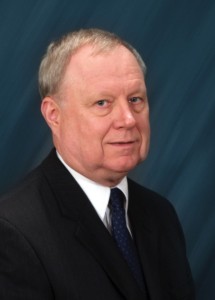 Alan Spackman, vice president – offshore technical and regulatory affairs
Alan Spackman, vice president – offshore technical and regulatory affairs
As in 2010, a significant portion of 2011 was spent on Macondo-related efforts. For activities related to Macondo, please see page 108. However, numerous other initiatives relating to offshore regulatory and technical issues are ongoing. Below is a summary.
MODU Code
The government of Brazil proposed that IMO amend the 2009 MODU Code to codify practices for alternatives to traditional lifeboat drills for MODUs. Arrangements similar to those proposed by Brazil have been accepted by several flag-State administrations; adoption of Brazil’s proposed amendments would validate and facilitate adoption of these alternative arrangements. Brazil’s proposal was approved as an addition to the IMO’s work plan by the Maritime Safety Committee at its May 2011 meeting and assigned to the Ship Design and Equipment Subcommittee for the development of regulatory text.
The Republic of the Marshall Islands has submitted its Deepwater Horizon Marine Casualty Investigation Report to the IMO. The report, along with a report from the US Coast Guard (USCG), are expected to be reviewed by the Flag State Implementation Subcommittee, which is likely to recommend additional amendments to the MODU Code.
NOSAC
The National Offshore Safety Advisory Committee (NOSAC) was established to provide advice to the Commandant of the Coast Guard in matters relating to safety in offshore industries. Its members serve two-year terms and do so without remuneration, so the costs associated with the committee are minimal.
In late 2010, the US Department of Homeland Security (DHS) allowed the committee’s charter to lapse. It was ultimately renewed in February 2011. As of January 2011, all appointed members of the committee had completed their term of appointment and no new appointments have been made by DHS from recommendations made over a period of several years by the Coast Guard. Given the delays, it is questionable if those candidates whose names were put forward by the Coast Guard for appointment have continued interest in serving.
Discharge system – EPA
The USCG and Environmental Protection Agency (EPA) established a Memorandum of Understanding (MOU) regarding implementation and enforcement of the National Pollutant Discharge Elimination System Vessel General Permit (VGP), which applies to domestic and foreign vessels, including MODUs, within the three-mile territorial sea of the US and addresses 26 discharges that are incidental to the normal operation of a commercial vessel.
Per this MOU, the EPA is responsible for interpretations of the VGP, including the terms used; whereas the Coast Guard will incorporate the verification of compliance with the VGP into its existing inspection protocols and procedures, which verify vessel compliance with safety, security and pollution prevention regulations.
ISO
ISO issued a draft international standard (DIS) for the second edition of ISO 19901-7: Stationkeeping Systems for Floating Offshore Structures and Mobile Offshore Units. It was approved on 10 August 2011 with no dissenting votes and after resolution of technical comments will progress to the final draft international standard (FDIS) stage.
It was originally intended that the amendments would be issued as a “minor revision”; however, due to the size of the amendment, the ISO Secretariat demanded that the amendments be progressed as a DIS. The proposed amendments are:
• Incorporate informative text from API RP 2SK 3rd Ed. on anchor design and analysis and mitigation of vortex-induced motions;
• Update guidance on synthetic rope mooring to be consistent with the recent amendment to API RP 2SM;
• Correct text in section 7.4.4, wind actions, and section 8.4.3, riser considerations;
• Standardize use of the terminology “most probable maximum”; and
• Include an updated Norwegian annex and new Canadian annexes.
The subcommittee hopes to bypass the FDIS stage by obtaining 100% approval at the DIS ballot and directly publish a new edition. The subcommittee has asked its members to focus on editorial corrections to the changes as if this were an FDIS and agreed that any technical comments that do not relate directly to the proposed changes can be deferred to the next revision.
Separately, the ISO standard on Site-specific assessment of mobile offshore units – part 1: Jackups (ISO 19905-1) was approved with 19 members voting for the standard and three abstentions. The same ballot approved the standard as an EN standard for use in Europe.
IMO – liability for offshore oil and gas spills
At its April 2011 meeting, the IMO Legal Committee urged that an informal group, led by Indonesia, continue to examine issues related to the establishment of a new liability and compensation for oil pollution damage resulting from offshore oil exploration and exploitation.
During committee discussion, one delegation forcefully objected to the IMO taking on this subject while two others expressed reservations. Numerous other delegations expressed support for the Indonesian proposal. IADC and OGP are participating in this group.
The committee also recommended that the IMO’s Council and the Assembly adopt an amendment to the organization’s strategic direction to allow this matter to be considered formally and for the development of a new instrument to be added to the committee’s work program. The council subsequently declined to do so but suggested that the committee further examine the issues.
Indonesia hosted an international conference in Bali on 21-23 September 2011 to further discuss the issue and gain support for its initiative. IADC was represented at this meeting by Derek Morrow. Also attending were OGP and representatives of companies with operations in Southeast Asia. These included PTTEP, Petronas and Repsol. National representatives from Australia, Egypt, Indonesia, Malaysia, Norway, the Philippines, Singapore and the US attended. IMO’s secretariat, however, was absent.
The IMO’s Legal Committee may once again examine this issue at its April 2012 meeting.
Similar initiatives, at a regional level, have been proposed in Europe and for the Arctic.
IMO – lifeboat systems
The IMO adopted new regulations that will require the evaluation of virtually all lifeboat release and retrieval systems. In adopting a new SOLAS regulation III/1.5, it was agreed that, for ships constructed on or after 1 July 2014, on load release and retrieval systems must comply with the provisions of the Life-Saving Appliance (LSA) Code.
Governments are encouraged to assure compliance with any ship constructed after 20 May 2011. For existing ships, it was agreed that on-load release mechanisms should be evaluated for compliance with the amended LSA Code no later than 1 July 2013 and that mechanisms not complying with the amended LSA Code must be replaced or modified no later than the next scheduled dry-docking after 1 July 2014 and no later than 1 July 2019.
IMO – MEPC
The IMO Marine Environment Protection Committee (MEPC) met in July 2011 and adopted several measures that will require action by MODU owners and operators, including energy efficiency measures under MARPOL Annex VI, revised MARPOL Annex V (garbage) regulations, biofouling guidelines and guidelines related to recycling of ships.
Mandatory measures to reduce emissions of greenhouse gases from international shipping were adopted by parties to MARPOL Annex VI. Amendments to MARPOL Annex VI regulations add a new chapter making mandatory the Energy Efficiency Design Index (EEDI) for most new ships (currently not including MODUs) and the Ship Energy Efficiency Management Plan (SEEMP) for all ships. The regulations are expected to enter into force on 1 January 2013.
The EEDI is a non-prescriptive, performance-based mechanism allowing ship designers and builders freedom to use the most cost-efficient solutions to comply. The SEEMP establishes a mechanism for operators to improve the energy efficiency of ships. MODU operators will need to develop SEEMPs for their units.
The MEPC also adopted the revised MARPOL Annex V Regulations for the prevention of pollution by garbage from ships; amendments are expected to enter into force on 1 January 2013. Main changes include the updating of definitions; the inclusion of a new requirement specifying that discharge of all garbage into the sea is prohibited, except as expressly provided otherwise; and expansion of requirements for placards and garbage management plans to fixed and floating platforms engaged in exploration and exploitation of the seabed.
The first set of international recommendations to address biofouling of ships was adopted as well. The guidelines will address the risks of introduction of invasive aquatic species through the adherence of sea life, such as algae and mollusks, to ships’ hulls. MODU operators should consider adopting procedures to reduce the likelihood of transfer of such species during rig moves.
The MEPC adopted the 2011 Guidelines for the development of the Ship Recycling Plan and updated guidelines for the development of the Inventory of Hazardous Materials, intended to assist the implementation of the Hong Kong International Convention for the Safe and Environmentally Sound Recycling of Ships, adopted in May 2009. Although this Convention has not entered into force, MODU owners should consider the implications of both.
Also adopted were MARPOL amendments to designate certain waters adjacent to the coasts of Puerto Rico and the Virgin Islands as an emission control area (ECA) for the control of emissions of nitrogen oxides, sulfur oxides and particulate matter under MARPOL Annex VI Regulations for the prevention of air pollution from ships. The amendments are expected to enter into force on 1 January 2013, with the new ECA taking effect 12 months later.
Guidelines were adopted for reception facilities under MARPOL Annex VI and guidelines addressing additional aspects to the NOx Technical Code 2008 with regard to requirements related to marine diesel engines fitted with selective catalytic reduction systems.
The MEPC also approved, for future adoption, draft amendments to the NOx Technical Code 2008, relating to engines not pre-certified on a test bed and to NOx-reducing devices. It also agreed on terms of reference for the review of the status of technological developments to implement the Tier III NOx emission standard.
USCG – risk-based inspection of modus
As its first post-Macondo initiative, the USCG has implemented a new policy for risk-based inspections of foreign-flagged MODUs operating under US jurisdiction.
In addition to the annual inspections required to obtain a certificate of compliance, which is required for operations under US jurisdiction, MODUs will be inspected more frequently based on a risk-based scoring system, similar to the Port State Control program for traditional ships. Scoring categories are:
• Owner/operator performance;
• Vessel’s flag-state performance;
• Class Society performance;
• Vessel history; and
• Vessel particulars (e.g., rig type and age).
Each time a MODU moves to a new well location, the USCG will evaluate the rig for inspection based on the overall score. Rigs with a high enough score will be subjected to more frequent inspections. Resources permitting, the USCG also will be conducting random, unannounced examinations on 25% of the rigs in a specific Captain-of-the-Port zone.
USCG – STCW amendments
The USCG published a supplemental notice of proposed rulemaking on 1 August (76 FR 45908) regarding implementation of the 2010 amendments to the International Convention on Standards of Training, Certification, and Watchkeeping for Seafarers (STCW Convention) and the STCW Code, and other non-STCW changes to update the regulations. This rulemaking will delineate the requirements for international and domestic credentials in the Code of Federal Regulations for all US mariners. Since this rulemaking will provide a noticeable split between STCW credentials and those used for domestic purposes, the USCG is holding public meetings to obtain comments.
IADC solicited member input and submitted comments to the docket.
MLC 2006
Members were urged earlier this year to begin planning for the entry into force of the International Labour Organization’s Maritime Labour Convention 2006. The Convention will enter into force 12 months after it receives its 30th ratification, as the 19 countries that have ratified the Convention to date have already fulfilled the minimum threshold level for tonnage.
The Convention requires that ships of States Party to the Convention obtain a Maritime Labour Certificate. To obtain the certificate, the flag-State must provide a Declaration of Maritime Labour Compliance (DMLC-Part I), which identifies a list of matters subject to inspection, identifies all national requirements necessary for implementation of the Convention, refers to any ship-type specific requirements, and clearly records any matters subject to “substantial equivalence” or exemption determinations.
Based on DMLC-Part I, the ship owner must prepare a DMLC-Part II that will identify all measures that will be in place to ensure ongoing compliance with the national requirements, as well as measures to ensure continuous improvement in labor conditions onboard the ship. Because of the scope of matters addressed in DMLC-Part II, most drilling companies will need to coordinate efforts to address company policies and procedures with regard to: human resources, training, safety, payroll and scheduling, claims management, insurance, legal, newbuild projects, medical and collective bargaining.
The flag-State’s competent authority or recognized organization will certify the DMLC-Part II and, after satisfactory inspection, issue the Maritime Labour Certificate.
For MODUs, many vexing issues remain unresolved: in particular, whether the flag-State will apply to the Convention to non-propelled units; and the degree to which, if at all, the flag-State will include the client’s personnel and third-party personnel within the definition of “seafarer” subject to the provisions of the Convention.
Once the 30-country threshold is reached, there will be only 12 months to complete the inspection and certification process for tens of thousands of vessels. The facilities of both the flag-States and recognized organizations will be hard-pressed to complete the process. Thus, members have been urged to begin the process. Many companies will need to press their flag-State authorities for answers regarding their interpretations regarding the scope of the Convention and available “substantial equivalence” or exemption determinations, as well as to obtain preliminary DMLC-Part I’s for their units. Countries already party to the Convention in which MODUs are registered include: Bahamas, Denmark, Liberia, Marshall Islands, Norway, Panama, Singapore, and St Vincent & the Grenadines.
OGP – drilling hazard site surveys
OGP issued new guidelines for conducting offshore drilling hazard site surveys describing good practice for conducting geophysical and hydrographic site surveys of proposed offshore drilling locations. The document also covers the use of exploration 3D seismic data to enhance or replace acquisition of a site survey.
The guidelines explain the requirements that different types of offshore drilling units have on a site survey. The new report also emphasizes the differing site survey requirements of shelf and deepwater environments.
Objectives of the site surveys and the site survey process are included in the guidelines, as well as suggestions on all phases of a site survey. These include initial desk studies and planning, data requirements and geohazard analysis and reporting.
 Ken Fischer, regional vice president – Middle East and Africa
Ken Fischer, regional vice president – Middle East and Africa
UBO & MPD Committee
The IADC Under-balanced Operations & Managed Pressure Drilling Committee has issued a notice pertaining to manufacturers’ testing of rotating control devices (RCDs).
“As manufacturers test their system in compliance with Spec 16RCD, the pressure ratings are reduced. For some applications, particularly using oil-based fluids, or at elevated fluid temperatures, additional fit-for-purpose testing should be considered,” committee chair Sara Shayegi, Shell, said.
API Spec 16RCD, Specification For Drill Through Equipment – Rotating Control Devices, stipulates design verification testing requirements for RCDs. Because many manufacturers test their equipment based on this specification, pressure limits using a common standard can be determined, and equipment from various manufacturers can be compared. Results from this testing may show lower operating ranges compared with previously published product specifications.
Those considering the use of RCDs are encouraged to consult with manufacturers for the latest pressure testing results based on API Spec 16RCD. For some operations, fit-for-purpose testing beyond design verification tests prescribed in API 16RCD may be advised.
A requirement for fit-for-purpose testing is being considered for future editions of the specification.
Dual Gradient Drilling Subcommittee
A Dual Gradient Drilling (DGD) Subcommittee was organized in 2011 under the UBO & MPD Committee to develop best practices and build interest in the technology. John Cohen of AGR Subsea serves as subcommittee chairman, and Kristin Falk, Ocean Riser Systems, is vice chair.
The group also seeks to improve understanding of various DGD methods and their limitations and benefits, and serve as a forum for information exchange.
“The DGD Subcommittee, like its parent, the IADC UBO & MPD Committee, will first work to facilitate the safe exploitation of hydrocarbons. Unlike the UBO & MPD Committee, the new subcommittee will focus on the offshore environment,” Mr Cohen said.
The 2011 IADC Dual Gradient Drilling Workshop was held in May in Houston, examining the types, challenges and benefits of DGD, emphasizing well control and testing the concept. The 2012 Dual Gradient Drilling Seminar will be held in March in Milan, Italy.
Contracts Committee
The IADC Contracts Committee continued its efforts to revise the model contract forms used in US land operations in 2011. Revisions to the daywork form are nearly complete and will be presented to the IADC Board of Directors for adoption. When the daywork form is complete, similar revisions will be incorporated into the footage and turnkey forms; these will also be presented for Board approval.
In view of new regulatory requirements and operating practices in the Gulf of Mexico, a similar project was initiated in February for the daywork form used in US offshore operations.
One key area pertains to the provision of rigs for emergency response operations. The full effect of requirements to send rigs and crews to assist in these situations has yet to be evaluated and addressed.
“There are many important considerations emanating from last year’s tragedy. These will need to be addressed in the IADC model contract form,” Rowan Companies’ John Buvens, vice chairman of the committee, said.
Middle East Operations Forum
Nabors Drilling International hosted an IADC Middle East Operations Forum (MEOF) meeting in their new Jebel Ali facility in May.
Mr Fischer conducted the meeting and reported on IADC activities and programs relevant to operations in the Middle East.
Mr Kropla also participated in the IADC reports, as did Jason McFarland, VP – membership and publications, and Linda Hsieh, Drilling Contractor managing editor.
The keynote discussion topic was “The Role of an HSE Case in an Effective HSE Management System and the Use of the IADC HSE Case Guidelines,” presented by Wayne Ralph, Noble Drilling.
Another MEOF meeting was scheduled for late October, just prior to the SPE/IADC Middle East Drilling Technology Conference & Exhibition, in Muscat, Oman. Hosted by KCA DEUTAG, the MEOF will feature a discussion on “Competency Management in an Expanding Market.” KCA DEUTAG and Weatherford Drilling International will make presentations.
Oman workshop
Mr Fischer facilitated a workshop held in May in Muscat, Oman, on “Using the IADC KSA Templates to Implement a Competence Assurance Program.” The event was held in cooperation with the Oman Leaders in Safety Forum, a contractor group of Petroleum Development Oman. Thirty people representing 17 companies attended.
The agenda addressed adapting KSA templates to the operations of specific companies, elements of a competence assurance program and using the IADC Competence Assurance Accreditation Program for third-party verification.
South Central Asia Chapter
In January, the South Central Asia (SCA) Chapter held the 2011 IADC South Central Asia Drilling Technology Conference & Exhibition in Mumbai. Transocean’s Deepak Munganahalli and ONGC’s UN Bose, SCA Chapter chairman, served as co-chairmen of the conference. The event featured various technical presentations and panel discussions of interest in India.
In May, SCA Chapter members met with their US-based counterparts during OTC. The annual meeting, chaired by Mr Bose, allows for discussion of issues confronting contractors in India. The agenda included reports on offshore safety regulations, current and pending tax rules and provident fund applicability. Additionally, the group heard a status report on employment visa restrictions.
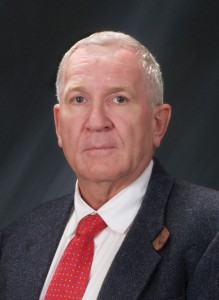 Joe Hurt, regional vice president – North America and lead staff land HSE issues
Joe Hurt, regional vice president – North America and lead staff land HSE issues
New assistant director Paul Breaux joined IADC in mid-2011 as assistant director – land operations to provide support for the HSE Committee and land division. He is also the lead staff for the Rig Moving Committee. Mr Breaux began his career in the oil & gas industry as a site medic and safety coordinator in 1998 and has served as HSE director for Dorado Oil Services.
OSHA outreach team
The Rocky Mountain Oil and Gas Safety Outreach Team met in May 2011 to discuss the formulation of safety standards for the oil and gas industry. The team – established under a grant given to the Rocky Mountain Education Center of Lakewood, Colo. – was tasked by OSHA to formulate specific industry rules and regulations that pertain to all phases of oil and gas operations in the continental US.
Currently, safety standards for upstream oil and gas fall under either the general industry or construction standard, depending on the phase; thus, there are no specific standards for the industry to follow.
Besides the main committee, three subcommittees were established: OSHA CFR Oil & Gas Regulatory Compilation Update 2011, Oil & Gas Upstream Job Task Analysis and Trainer Qualifications.
OSHA also issued a grant to Red Rocks Community College in Colorado, an OSHA-authorized training center, to develop an oil and gas-specific outreach training course. The course would be similar to the OSHA 10- and 30-hour outreach training courses based on OSHA regulations for a specific industry – e.g., General Industry (29CFR1910), Construction (29CFR1926) and Maritime (29CFR1015). Drilling operations are regulated under 29CFR1910 while other upstream operations fall under either 29CFR1910 or 29CFR1926, depending on the process being undertaken.
Red Rocks Community College, in association with the Rocky Mountain Education Center, met in August to solicit industry input in the development of the curriculum for an OSHA 10-hour course specific to oil and gas. The meeting addressed three issues: defining course content that would cover all regulations that apply to the oil and gas industry, applying a hazard assessment approach to the course design and defining trainer qualifications to teach the OSHA oil and gas course. The courses would be offered only by OSHA-authorized training centers.
It was determined that the outreach group would develop three courses, the length of each to be determined later and based on course content. The three levels of courses would be: awareness orientation (which could be satisfied by the SafeLandUSA orientation), OSHA training (which would expand the orientation course time and content to meet workers’ need for training), and OSHA supervisor/safety leadership training. The meeting leader commented that, once the course content is developed, it could be used as a template for developing a vertical standard for the upstream oil and gas industry.
Wyoming OSHA
In August 2011, members of the Wyoming Oil & Gas Industry Safety Alliance (WOGISA) Regulatory Subcommittee met with Wyoming OSHA to review proposed changes to the Wyoming Oil and Gas Drilling Safety Regulations.
Wyoming OSHA laid out its concerns and asked industry representatives what practices or changes to the wording in current regulations were needed. Main issues that arose were:
1. Wyoming OSHA is proposing to require fire-resistant clothing (FRC) on all drilling locations once the well is spudded. In addition, vendors and other non-rig personnel within 75 ft of the wellbore must wear FRCs unless the personnel are in office locations (i.e., toolpusher bunkhouse).
2. It was proposed that the use of Geronimo-type derrick escape devices be disallowed.
3. Although current regulations require specific training, there will be a statement in the new rules that “all required training shall be documented.”
There will be a 45-day period for public comment on these proposals before they are submitted to the state OSHA commission, which will meet in December 2011.
OSHA – employee reporting
OSHA proposed updating Appendix A to Subpart B of its Injury and Illness Recording and Reporting regulation. The major part of the proposed rule change was to move from the Standard Industrial Classification system to the North American Industry Classification System. Although this should not affect the upstream oil and gas industry, OSHA also included changes in employer reporting requirements.
Under the proposal, employers would be required to report to OSHA within eight hours all work-related fatalities and all work-related in-patient hospitalizations, and within 24 hours all work-related amputations. OSHA defines amputations as loss of a limb or other external body part, including a fingertip.
The current regulation requires an employer to report to OSHA within eight hours all work-related fatalities and in-patient hospitalizations of three or more employees. OSHA hopes that this increase in employer reporting will provide them with better opportunities to investigate workplace incidents.
OSHA also continues to consider whether to include the loss of an eye in these reporting criteria.
OSHA – noise proposal
OSHA proposed and later withdrew its proposed “Interpretation of OSHA’s Provisions for Feasible Administrative or Engineering Controls of Occupational Noise.” The proposal would have clarified the term “feasible administrative or engineering controls” as used in OSHA’s noise standard.
Due to concerns raised about the proposal, Dr David Michaels, assistant secretary of labor for occupational safety and health, acknowledged that it requires much more public outreach and resources than originally anticipated.
“We are sensitive to the possible costs associated with improving worker protection and have decided to suspend work on this proposed modification while we study other approaches to abating workplace noise hazards,” he said.
Dr Michaels met in January 2011 with the offices of Sens. Olympia Snowe and Joseph Lieberman, members of the Senate Committee on Small Business and Entrepreneurship. The two senators co-chair the Senate Task Force on Manufacturing.
OSHA said it will continue to review comments that have been submitted.
OSHA – FRC
IADC staff continues to address OSHA’s letter of interpretation requiring employers to provide fire-resistant clothing (FRC) to workers. Members are represented on the API task group that is developing a hazard assessment recommended practice. At this meeting, OSHA pledged to work with industry in developing a PPE hazard assessment tool for the upstream industry.
FMCSA – HOS
The Federal Motor Carrier Safety Administration (FMCSA) proposed in early 2011 to require all motor carriers currently required to maintain Records of Duty Status (RODS) for Hours of Service (HOS) recordkeeping to use Electronic On-Board Recorders to monitor their drivers’ compliance with HOS requirements.
All motor carriers currently required to use RODS would still be required to obtain and keep records of Duty Status reports. However, they would be relieved of the requirements to retain supporting documents to verify driving time.
FMCSA also proposed to require all motor carriers – both RODS and timecard users – to systematically monitor their drivers’ compliance with HOS requirements. Motor carriers would be given three years after the effective date of the final rule to comply with these requirements.
Rig Moving Committee
The Rig Moving Committee has completed a competency program for swampers that is pending final approval. The committee is now developing a competency program for gin-pole truck operators and reviewing principles and requirements of the Compliance, Safety, Accountability (CSA) 2010 pilot program.
Health, Safety and Environment Committee
The Health, Safety and Environment Committee has been reviewing and sharing information on company programs on corporate responsibility, compliance, company culture and SEMS compliance.
The Environmental Affairs Subcommittee has been reviewing cooling water discharge issues, as well as environmental data tracking.
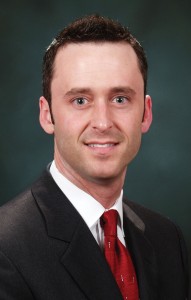 Jason McFarland, vice president – publications and membership
Jason McFarland, vice president – publications and membership
Ethics Committee
The IADC Ethics Committee met in March 2011 to discuss ways in which ethics and compliance training can be tailored for different companies, and the next meeting is expected to convene in November. Additionally, Ensco’s Brady Long, who has led the committee as chairman since its inception in 2007, has been succeeded by James Sanislow, Noble Drilling Services.
Technical Publications Committee
The IADC Technical Publications Committee held three meetings in 2011 and will meet again in December to work on upcoming publications. The group has published two books since its inception in 2005 – “Casing and Liners for Drilling and Completions” (2007) and “Managed Pressure Drilling” (2008). The publication of several additional books is anticipated for 2012, on underbalanced drilling, cementing and coiled tubing.
Leon Robinson continues to chair the committee, assisted by vice chairs Mark Morgan, Chevron, and Gary Young, Encana Oil & Gas.
Nigeria Chapter
IADC established the Nigeria Chapter, based in Lagos, in 2011. It brings together IADC members from indigenous and international companies to promote safety, training and environmental stewardship, as well as enhance industry relations with the general public.
“Nigeria presents both challenges and opportunities for the oil and gas industry. The Nigeria Chapter will play a vital role in furthering the awareness of local policies and regulations affecting oil and gas drilling, production and service companies operating in the region,” IADC president Dr Lee Hunt said.
Chapter officers are: chairman, Alex Illah, Transocean; vice chairman, Adeniji Ramoni, Saipem; secretary, Olushola Ismail, Oando Energy Services; and treasurer, Ben Agadagba, Lonestar Drilling.
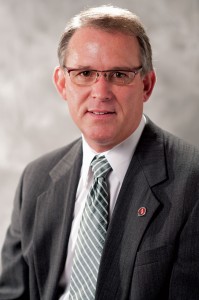 Mark Denkowski, managing director – accreditation and certification
Mark Denkowski, managing director – accreditation and certification
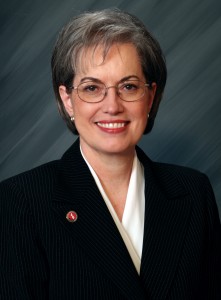 Dr Brenda Kelly, senior director – accreditation and certification
Dr Brenda Kelly, senior director – accreditation and certification
ACD restructuring
Mr Denkowski joined the IADC Accreditation & Certification Department (ACD) in 2011 as the department’s managing director. He has assumed overall management responsibility for the unit, which was restructured into functionalized areas of program development, customer service and quality assurance/quality control.
Dr Kelly continues to head up the program development function under the new title of senior director – program development. She now focuses on new program development, as well as updating and maintaining program documents and other instruments associated with IADC’s competency and accreditation programs.
Elfriede Neidert, quality control/quality assurance coordinator, is responsible for scheduling and following up on training provider audits, as well as overseeing the department’s ISO-certified quality management systems.
The customer service function consists of accreditation coordinators Marlene Diaz, Janet Lara, Joseph Washington and Loundia Riggs. Ms Riggs focuses on ACD implementation of IADC’s new database system, plus backup support for the system and new IADC website support. She continues to handle incoming training records and provides customer support.
Julia Swindle has moved into a new role as industry compliance specialist, still reporting to Mr Denkowski. Ms Swindle continues to support program development, with an emphasis on application, forms and audit check lists updates, and to coordinate activities of the Training, HSE and Well Control committees. She also participates in regulatory and compliance meetings and conferences to bridge the gap between IADC’s Operations and Accreditation departments.
Well Control Committee/WellCAP program revisions
In 2011, the IADC Well Control Committee initiated tougher requirements for WellCAP to strengthen well control competencies and enhance program integrity while removing ambiguities or lack of uniformity among existing program processes.
Program changes approved include modifying procedures for combining courses, implementing tougher testing protocol and clarifying instructor qualifications at the introductory, fundamental and supervisory levels.
Additional approved improvements include shortening the recertification cycle and revision of the WellCAP supervisor-level drilling curriculum.
Program changes implemented are:
• Procedures for combining WellCAP courses − WellCAP drilling courses are no longer permitted to be combined with wireline, coiled tubing or snubbing courses or any other courses that do not have similar operational approaches to well control. Drilling courses may continue to be combined with workover/completion courses.
• WellCAP testing protocol − All final WellCAP examinations are now clearly defined as “closed book.” Course quizzes and intermediate examinations may be “open-book” format provided the final examination is comprehensive and closed-book. If intermediate examinations are to form a final composite score of a student’s course performance, all intermediate examinations must be closed-book. Collectively, the intermediate examinations must provide a comprehensive assessment of the student’s knowledge and understanding of the specific WellCAP course content for which assessment is being conducted.
• Instructor qualifications for introductory level courses – During the application process, instructors providing training at the introductory level are now required to meet qualifications previously required of fundamental- and supervisory-level instructors. Introductory instructors must provide evidence of satisfying two of three optional qualifications: valid supervisory-level well control certificate, presentation skills or relevant teaching experience, or operational experience or technical skills.
• Acceptance of IWCF Certificate as WellCAP instructor qualifications (fundamental and supervisory levels) − The IWCF supervisory well control certificate will be accepted as evidence of WellCAP instructor qualifications if the certificate is being provided as evidence of instructor qualifications. This is contingent upon the certificate being issued by a training provider/IWCF assessment center other than the one for which the instructor is employed or working.
Public comments were solicited and reviewed by the Well Control Committee before implementing these revisions.
Well Control Roundtable
Approximately 40 people attended the Well Control Roundtable and Workshop, sponsored by the Well Control Committee, in December 2010.
The program was organized around two panels, one on “The Future of Well Control Training” and the other on “How Simulators Can Enhance Well Control Training.”
During the first panel, operator and drilling contractor representatives discussed current well control training and ideas on ensuring competency.
Steve Smith, Saudi Aramco, said he believes that the lack of a clear understanding of certification, qualification and competence is impeding the development of well-defined plans for well control training and competence assessments. He also expressed concerns over the industry’s inability to introduce what he called the “adrenaline factor” into classroom training, citing an urgent need to ensure that employees respond appropriately during well control events.
Flexibility of the WellCAP program was identified as a training strength by Arabian Drilling’s Harin Hattangady, although he added that this flexibility can potentially be misused. Another concern was the limited emphasis on preventing well control events, particularly in training for assistant drillers and drillers. He believes that simulators and interactive computer-based training (CBT) are important tools for future training.
Panel participants also declared it time to rethink the current approach to well control training. Many suggestions were offered for enhancing training and for developing and assessing employees’ competencies. They included:
• Strengthening current training standards and audit processes;
• Adding more well event prevention training;
• Utilizing more team activities;
• Reviewing and modifying curriculums as needed to ensure delivery of fit-for-purpose training;
• Increasing the amount of simulator time in supervisory-level courses; and
• Developing techniques for introducing the “adrenaline factor” into training.
Use of simulators, CBT and e-learning for pre-well control course refreshers and pre-assessments, along with readily available continuing education materials at the worksite, were identified as tools for helping employees to retain knowledge and skills.
Third-party assessments, course pre-assessments and use of simulators to assess not only well control knowledge and skills but also employees’ ability to make decisions were discussed. It was recommended that employees identified as weaker performers be required to undergo annual well control training.
In the second panel, participants discussed ways to enhance well control training through the use of simulators. Among the key suggestions were to:
• Use simulators more in training and assessing employee knowledge, skills and abilities;
• Develop more stringent simulator exercises and assessments; and
• Improve administrative and recordkeeping processes by taking advantage of simulators’ ability to record student performance, check on student identity and provide an audit trail for both instructor and student activities on the simulator.
“The roundtable discussions confirmed our well control community’s concern for employees’ well control competencies and their eagerness to address these concerns head-on,” Dr Kelly said.
A workshop for WellCAP instructors followed the roundtable. Participants received continuing education credits to apply toward maintaining WellCAP instructor approval.
Simulator manufacturers also held workshops with their user clientele to demonstrate simulator capabilities.
WellCAP Review Panel
John Breidenthal, Chevron Energy Technology Co, and Darryl Bourgoyne, Louisiana State University, were elected to the IADC WellCAP Review Panel in March 2011. Mark Mazzella, BP, continues his role on the panel.
The newest members of the review panel are Malcolm Lodge, Transocean, and Karl Shearer, Diamond Offshore Drilling.
Accreditation audits
In response to the rapid growth of IADC-accredited training programs in Mexico, the association began in September 2010 a concentrated audit effort across that country. The intent was to reassure association members and training program students that IADC’s accreditation programs offer the same quality wherever the training is delivered. The audit effort will continue until all training providers in Mexico have been audited.
In Mexico and elsewhere, IADC began to take disciplinary action against training providers who either did not respond to corrective/preventive actions requested after site audits or only partially responded. Disciplinary action included suspension and revocation of accreditation; timelines were determined by the severity of the nonconformity.
“IADC is committed to maintaining accreditation programs of the highest standards. Accreditation staff will continue to take steps to ensure the integrity of the programs,” Mr Denkowski said.
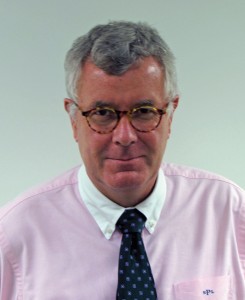 Jens Hoffmark, regional vice president of European Operations
Jens Hoffmark, regional vice president of European Operations
EOF June meeting
OGP, along with representatives from four European regulators groups, attended the IADC European Operations Forum (EOF) in June 2011 in Copenhagen. The Netherlands Oil and Gas E&P Association (NOGEPA), Norway’s Petroleum Safety Authority (PSA), Germany’s State Authority for Mining, Energy and Geology and the Danish Energy Agency joined approximately 20 representatives from drilling contractors and oil companies for the meeting.
Steve Cromar, ConocoPhillips, and Annabel Holroyd, OGP, discussed the status of the Global Industry Response Group (GIRG) initiative and the expected EU initiatives covering the oil and gas sector. Mr Cromar stressed that ongoing commitment from the industry is required and that active international communication is essential.
Gert-Jan Windhorst of the NOGEPA and George Galloway, GeoTechInvest and a consultant for NOGEPA, spoke about HSE initiatives in Holland since Macondo.
Magne Ognedal of Norway’s PSA distributed copies of his agency’s Macondo report summary issued in June 2011.
A group Q&A discussion followed touching on topics such as the use of dispersants, competence and capping devices.
EOF September meeting
Eleven drilling contractors, five regulators representing Norway, Denmark and Holland, and one oil company representative participated in the September 2011 EOF meeting in Amsterdam, together with IADC staff.
Newbuild rigs were discussed, as approximately 120 new rigs will be entering the market over the next few years. This will require about 12,000 new crew members. Contractors and a training school proposed the creation of a basic training program – an idea that was passed on to the IADC Training Committee.
Mr Spackman offered an update on post-Macondo initiatives, with a focus on the discussion papers on USCG and BOEMRE reports, as well as BOEMRE’s proposed SEMS 2 rule.
Mr Denkowski spoke about IADC’s accreditation programs, noting that the Offshore Competency Training Program has been renamed Personnel Offshore Safety Training to reflect its focus on training. The program is expected to be rolled out in early 2012.
Mohamed El Halimi from the Danish Energy Agency (DEA) offered a presentation on how DEA is monitoring and studying Macondo reports to ensure lessons are learned with the objective to further improve HSE legislation.
PSA’s Mr Ognedal also was present. He explained that PSA has generally concluded that there is little need for changes to existing Norwegian regulations.
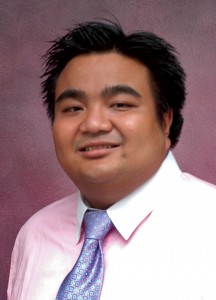 Chit Hlaing, operations assistant – Asian operations
Chit Hlaing, operations assistant – Asian operations
AOF October 2010 meeting
Mr Kropla updated the Asia Operations Forum (AOF) on IADC’s and industry’s response to Macondo at a meeting in October 2010 in Singapore. Contractor members also discussed issues of immediate concern in the Asia Pacific region. In attendance were representatives from Aban Offshore, Atwood Oceanics, Frigstad Offshore, Jasper Offshore, Maersk Drilling, Nabors Drilling, Seadrill, Transocean and Vantage Drilling.
AOF March 2011 meeting
AOF convened again in Singapore in March 2011 to discuss pressing issues in the region and receive an update of IADC activities. Two special presentations were offered as well, one on compliance with the US Foreign Corrupt Practices Act (FCPA) and the UK Bribery Act, and the second on updates and developments on the cabotage issue and local content requirements in Indonesia.
For the first presentation, two guest speakers from Hogan Lovells International Law Firm discussed key provisions of the FCPA and Bribery Act, key differences between their requirements and practical advice on how companies operating outside the US and UK can avoid violations.
For the second presentation, Hing Ming Wong, Transocean, provided updates on the legislative and regulatory problems in Indonesia.
The next AOF meeting is scheduled for 22 November, in conjunction with the IADC Critical Issues Asia Pacific Conference & Exhibition in Kuala Lumpur, Malaysia. Denys Hickey, head of Energy & Offshore Group Asia Pacific Region, Ince & Co Singapore, will make a guest presentation on regulatory challenges and international law developments.
Derek Morrow, IADC industry affairs consultant, also will provide updates on transboundary oil damage & pollution legislation.
Indonesia Local Content Workshop
IADC held a workshop in Singapore in late June to address the “35% local content requirement” in the Indonesian market and to help drilling contractor members understand ways of fulfilling that obligation.
PT Patra Mitra Konsulindo, an Indonesian consulting firm, helped conduct the training session, which covered the legal aspects and basic principles of local content calculation on procurement of materials, goods and services and how to prepare service cost structures and fill in local content in bid documents. Participants also were able to ask pressing questions about the requirements and get them answered directly.
Contractor members in attendance were Atwood Oceanics, COSL Drilling, Diamond Offshore, Ensco, Maersk Drilling, Mermaid Drilling, Northern Offshore, Rowan Companies, Seadrill, Songa Offshore, Transocean, UMW Standard Drilling and Vantage Drilling.




